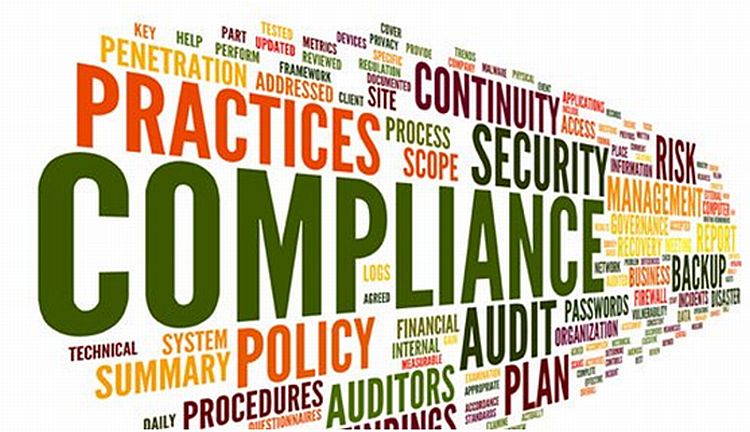5 Secrets a CFO must know to reduce Tax Compliance Risk
I was attending a conference on Direct tax about two years back. CFO of a very reputed company was a guest speaker there and he made this comment: “Sometime I wonder whether I am a Chief Finance Officer or Chief Compliance Officer”. I could sense the pain in his comment. In this context, I am sharing five secrets, which can help a CFO to mitigate the tax compliance risk significantly.
- Get the documentation complete, just after filing of tax returns
Incomplete documentation is one of the major contributors in enhancing the tax compliance risk. When statutory audit is being finalized, many adjustments are made, accounting entries are passed and reconciliations are prepared. However, all such working takes place in soft copy format, primarily on Excel.
I am yet to come across a company, which initiates to complete the documentation in physical format to ensure the assessment readiness of particular tax compliance i.e. Income Tax, Service Tax or VAT.
If you recall, major tax demands takes place, at the time of scrutiny assessment/audit, just because of lack of certain documents or reconciliations. It becomes more severe when the person who prepared the tax return and related documentation, has left the company. Documentation plays a critical role because all tax assessment takes place after 2 or 3 years of end of a Financial Year. In case of first level of assessment, the information desired by the assessing officer is usually based on facts of the business and very less related to the interpretation of law.
As a CFO, you can significantly reduce this risk by starting a practice of assessment readiness review of tax compliances right after completion of statutory audit and filing of corporate tax return. Moreover, it takes less than 1/4th of the actual time to prepare the documentation at this point of time, as memory remains quite fresh.
- Create the compliance tracker on Google Sheet if Compliance Management is not automated
Please skip this point if status of tax compliances in your company is being monitored through any software.
Just be present about the mechanism of tracking the status of tax compliances by answering following questions:
- Is a tax compliance status is prepared on a periodical basis (preferably on monthly basis)?
- Is it being maintained on an Excel file? Does somebody take regular back up of this file?
- Is an audit trail possible if any changes are made in this Excel file?
- Do you face any difficulty if the team member (who prepares this tracker) is on leave or has left the company?
- Is there more than one person responsible for tax compliances and you face issues in collating the data at one place?
There is a very simple solution for this complex problem. Take your compliance management system on Google Sheet by creating a Compliance Tracker. It looks like Excel sheet and all the functionalities are almost similar. You might think that Google Sheet can be accessed through a gmail id only, which is usually not allowed in companies. Let me share that Google sheet can be accessed through your official id as well.
Why Google Sheet? I am sharing some benefits of Google Sheet which will help you in understanding the rationale behind it:
- You need not to save while entering any data/value in Google Sheet.
- You can access it any time anywhere and with any device (computer, phone, tablet etc.).
- You can access it in even offline mode in case Internet connectivity is not there.
- It’s free and you can upload data up to 15GB space.
- You can share it with any number of people in the organization, including your auditors.
- You can manage the use of file through access right management i.e. View and Edit rights can be given to different users as per requirement.
- You can even upload/convert the existing Excel file in Google Sheet format. It can be downloaded back in Excel format for further working, if required.
- It contains the audit trail of all the changes taken place since it was first created/uploaded.
We are using Google Sheet from last 5 years and it has made our life really easy. We are able to manage the tax compliances of our clients with ease, which has operations spread out across pan India.
Measurement drives behavior. If tax compliances are tracked in a real time environment, the chances of non-compliance become negligible. Whatever gets measured gets done.
- Take print out of all the compliances which are filed online
These days, majority of tax compliances has shifted to online space. It certainly offers more convenience than the offline scenario. However, it can become more riskier and time consuming if print outs are not taken on a regular basis.
The most common challenges faced by the companies:
- The user id and password are not working once an employee leaves on unpleasant terms.
- The consultant (who handles the tax compliances) is not available when the information is required on a super urgent basis.
- Tax department’s website is not working or under maintenance when you require the hard copy of a particular tax compliance urgently.
This can be one of the KRA’s of the person who is handling the tax compliances.
- Get the tax compliance audit done at least once in two years
In spite having the above three secrets in place, traditional style compliance audit works wonders in reducing the tax compliance risk. Don’t confuse the compliance audit with annual Tax Audit or any other audit.
What’s the rationale behind compliance audit?
- Chances of human errors while preparing tax return
- Negligence about applicability of a new law
- Negligence about amended provisions of existing law
- Incomplete documentation
As per our experience in last 11years, when we carry out the tax compliance audit, we get to observe one or more of the above points which proactively mitigates the compliance risk.
It’s a common provision across all the tax laws that if an error in the tax return or anywhere else is admitted or pointed out by the assessee itself, assessing officer doesn’t penalize. However, if assessing officer catches the same mistake, then it is considered willful evasion or default and penalty proceeding is initiated.
It’s advisable to get the tax compliance audit done from a specialized firm, which has significant experience in managing tax compliances. Minimum frequency of tax compliance audit should be at least once in two years.
- Regular training about tax compliances
In this ever changing and complex tax environment, it’s very important that the internal team, which is handling the tax compliances, is updated about the important changes related to the business of company. You may be aware that “Ignorance of law excuses no one” is a legal principle, which holds that a person who is unaware of a law may not escape liability for violating that law merely because he or she was unaware of its content.
Some easy ways to mitigate this risk:
- Subscribe the newsletter of some reputed tax consultants.
- Send your team to seminar and conferences related to tax issues.
- You can also send your team members to local study circles of ICAI, which organizes regular events on tax compliances.
- Invite an expert in your company who can interact with your team.
- Ask your team member to give presentation to the whole team on a regular basis, which can be one of their performance appraisal criteria.
I hope this will help you in reducing the tax compliance risk. Look forward to hear from you at chandan.goyal@blueconsulting.co.in or alternatively at 9810410421.


